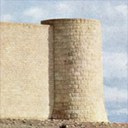0161 Die Totenburgen von Tobruk und El Alamein – strategische Memorialarchitektur für die Bundesrepublik
Identifiers (Article)
Identifiers (Files)
Abstract
The two German memorials in Tobruk, Libya (1954-1955) and in El Alamein, Egypt (1956-1959) were deliberately built close to sites of decisive Second World War battles. At both memorials, commemoration is cultivated in a predominantly de-individualized manner, and the historical-political meaningfulness as well as the fort-like, hermetical design of the structures directly reference concepts of commemoration prevalent during the Third Reich. Analogous to these concepts, the memorials refer back to the Hohenstaufen castles and forts in southern Italy and Sicily, and, thus, to the Holy Roman Empire’s most persistent period of territorial expansion. Robert Tischler, the architect responsible for both of the German War Graves Commission’s monuments in North Africa, had already constructed similar memorials during the National Socialist period. He was able to carry such projects over to the post-war period without further scrutiny. This illustrates once again the oppressive personnel and mental consistencies which continued beyond 1945.
Statistics


License

This work is licensed under a Creative Commons Attribution-NonCommercial-NoDerivatives 4.0 International License.



